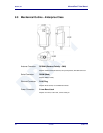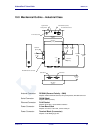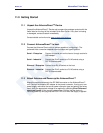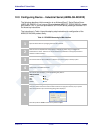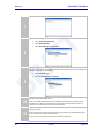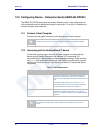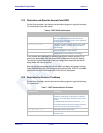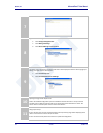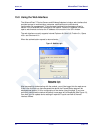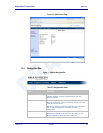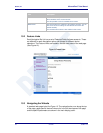
AirborneDirect™ Users Guide Quatech, Inc.
100-8510-110 2/21/2011 39
13.3 Determine and Store the Access Point SSID
On the Host computer, use the terminal emulation program to type the following
CLI commands in the order shown:
Table 16 - UART SSID & Authentication
CLI Command
Description
wl-scan<CR>
The module scans for APs and returns information on
each one it discovers. Note the SSID value that is
returned, as you will need to enter it when configuring
the device in the next steps.
wl-ssid [SSID]<CR>
Associates the module with the network name [SSID]
you specify. [SSID] is the value returned by the wl-
scan command.
commit<CR>
Stores the information to flash memory.
restart
Restarts the device and installs the new settings.
If your access point has security enabled, you will also need to use the CLI to
enter those parameters (See the Enterprise CLI Reference Guide for details).
That setup is outside the scope of this user guide, which assumes that the AP
being tested with has no security.
After issuing the commands, the unit will restart and apply the network settings.
Once restarted the LINK LED will stop blinking and go solid. If DHCP is enabled
on the network the POWER and LINK LED’s will turn solid green.
13.4 Determine the Device’s IP address
On the Host computer, use the terminal emulation program to type the following
CLI commands:
Table 17 - UART Determine Module's IP Address
CLI Command
Description
Send Break Sequence
The serial port starts up in a listen mode waiting for a
request for a data tunnel. To access the CLI mode in
which set-up can take place the break sequence must
be sent.
The default break sequence for the device is ÿ~ABD
The sequence must be sent with no trailing characters.
If received correctly the device will respond OK.
auth dpac dpac <CR>
Authenticate with the device server.
wl-ip<CR>
The module returns the IP address assigned to it by
the DHCP server.




